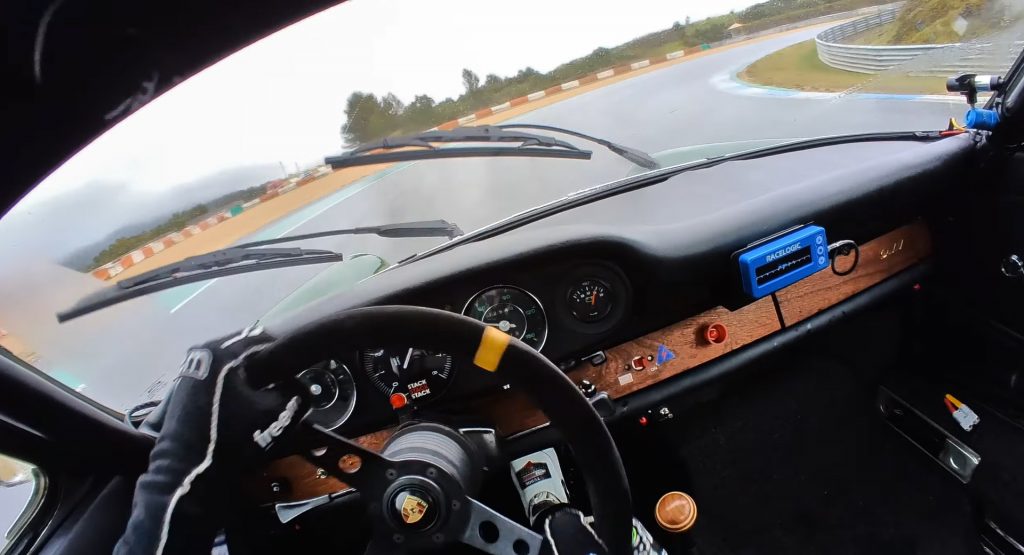The Porsche 911 has always had playful handling thanks to its rear-mounted engine, and requires a skillful driver to get the most out of the chassis.
In a short YouTube video, Pilot Oliver James Webb demonstrates the proper technique for tossing an early Porsche 911 around the Estoril circuit in Portugal.
Early 911s are characterized by their short wheelbase and 2.0-liter flat-six engine, which was only available between 1963 and 1966.
The handling understandably is lively, but also as predictable as a clock’s pendulum. All Oliver has to do is nudge the nose toward the apex of the corner and let the countersteer take care of the rest.
Read More: Would You Pay Nearly A Quarter Of A Million For This 1955 Porsche 356 Speedster?
For the street, the front bumperettes were filled with lead to try and give the car more favorable weight distribution, but with the weight on the very tip and tail, the vehicle was still a handful to control.
The 911 featured in the video is a 1963 model year, finished in beautiful Irish Green. The race-tuned engine creates a magnificent sound as it screams up to 7,500 rpm, but produces just 160 horsepower. A low weight of just 1000kg (2,205 lbs) means that the gallop of every hoof is felt.
These early examples are some of the most highly coveted among collectors, fetching high prices at auction. However, the high values and slippery handling of early 911s doesn’t stop owners from taking them to the track to push them to their limits.
The vehicle was built for the Peter Auto 2.0-liter Porsche Cup series, which features only the first iteration of the Porsche 911, which ran from 1963 to 1966. 40 cars enter the race which lasts just 90 minutes, and every car is built to pre-66 FIA regulations.
When every car is the same, it’s up to the skill of the driver to extract every last ounce of performance out of the car. A well-qualified pilot at the helm of a Porsche 911 is a match made in motorhead heaven and a recipe for exciting racing.



